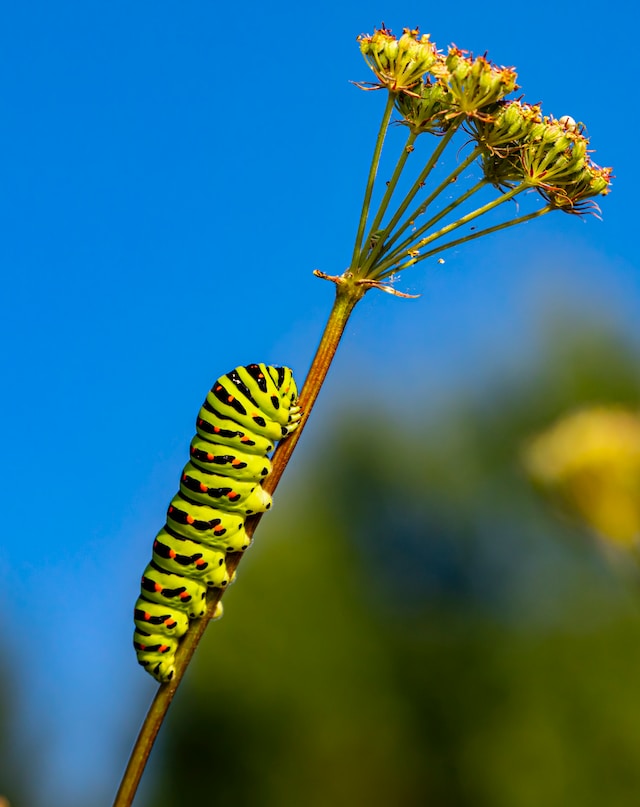Introduction: In the intricate realm of survival, caterpillars have evolved a myriad of fascinating defense mechanisms to navigate the perilous journey of their larval stage. Through their remarkable adaptations, including camouflage and poison, these miniature warriors ensure their safety and increase their chances of transforming into magnificent butterflies. Join us as we delve into the intricate world of caterpillar defense, unraveling the secrets behind their camouflage prowess and toxic arsenal.
- Camouflage: Mastering the Art of Disguise (200 words) Caterpillars have mastered the art of blending seamlessly into their environment through remarkable camouflage. With their intricate patterns and colors, these adept creatures fool predators into thinking they are part of the surrounding foliage. Some caterpillars mimic leaves with astonishing precision, imitating the shape, color, and even the texture of their host plants. Others employ disruptive coloration, utilizing contrasting patterns or eye spots to confuse potential threats. Camouflage not only helps caterpillars evade predators but also allows them to continue feeding undisturbed, ensuring their growth and development.
- Mimicry: Deceptive Designs (150 words) In addition to camouflage, some caterpillars employ mimicry as a defense strategy. They imitate other organisms, such as snakes, spiders, or even bird droppings, to deter potential predators. By mimicking these seemingly dangerous or unappetizing creatures, caterpillars create a sense of danger or disgust, effectively warding off would-be attackers. This remarkable adaptation showcases the ingenuity and resourcefulness of these small creatures in their fight for survival.
- Chemical Warfare: Poisonous Protection (200 words) Caterpillars possess an arsenal of chemical defenses, often derived from the plants they feed on. Through their diet, they accumulate toxic compounds that render them unpalatable or even deadly to predators. These toxins serve as a potent line of defense, discouraging predators from consuming them. Some caterpillars, like the strikingly colored Monarch caterpillar, feed on milkweed plants, which contain cardenolides, making them distasteful and toxic to predators. Other caterpillars, such as the Io moth caterpillar, sport venomous spines that can cause discomfort or pain if touched. This chemical warfare allows caterpillars to ward off predators, increasing their chances of survival and successful metamorphosis.
Conclusion:
Caterpillars, with their fascinating defense mechanisms, exemplify the extraordinary lengths creatures go to ensure their survival. Through their mastery of camouflage and mimicry, caterpillars artfully disguise themselves amidst their surroundings, evading the watchful eyes of predators. Additionally, their chemical warfare strategies, employing toxins and venomous spines, provide a potent line of defense, discouraging predators from preying upon them. By unraveling the defense mechanisms of caterpillars, we gain a deeper appreciation for the ingenious strategies nature employs to ensure the continuity of life’s delicate balance.




